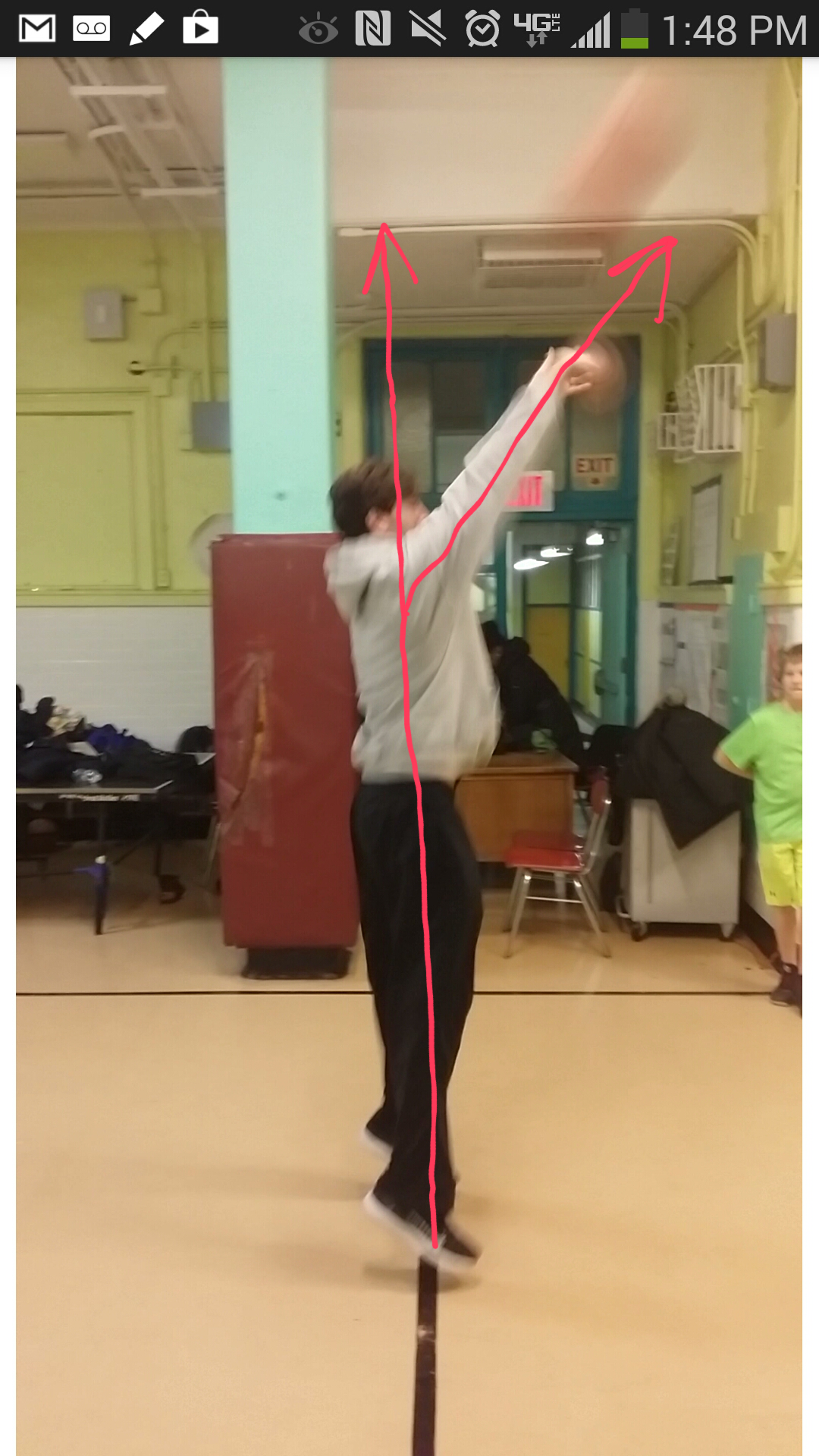 by Emily Faulkner
by Emily Faulkner
I have the privilege of being the movement coach for Steady Buckets, a youth basketball league in New York City that serves kids ages 6-18. It’s a free program that offers skill building classes as well as league play. Children from all walks of life come to this program, from Manhattan’s elite private schools to the projects in the Bronx. I owe this opportunity to the visionary coach, Macky Bergman, who saw that the Alexander Technique would reinforce his coaching, but from a completely different angle.
About two years ago, Macky and I sat down for coffee, and I explained to him why I wanted to work with his players, and how the Alexander Technique would help them. Two hours later, after popping up and down to demonstrate for each other monkey, defensive stance, and proper shooting form, we were both brimming with excitement. Macky is a tough-talking coach, but he’s open minded and interested in alternative techniques to help his players focus and be present. He brought in a Tai Chi teacher one year. Macky intuitively understood inhibition: in order to get the ball through the hoop, you need to let go of the desire to get the ball through the hoop. Additionally, he was frustrated that he couldn’t get the kids to shoot with a straight spine or stand upright when defending. As a dancer and an Alexander teacher, it was pretty clear to me that the kids needed to use their hip joints. It was a perfect marriage: For Macky, what could be better than someone who would enable his players to improve their form? For me, what could be better than an unlimited supply of kids to whom I could teach the Alexander technique and see proof positive that the AT can change lives and games?
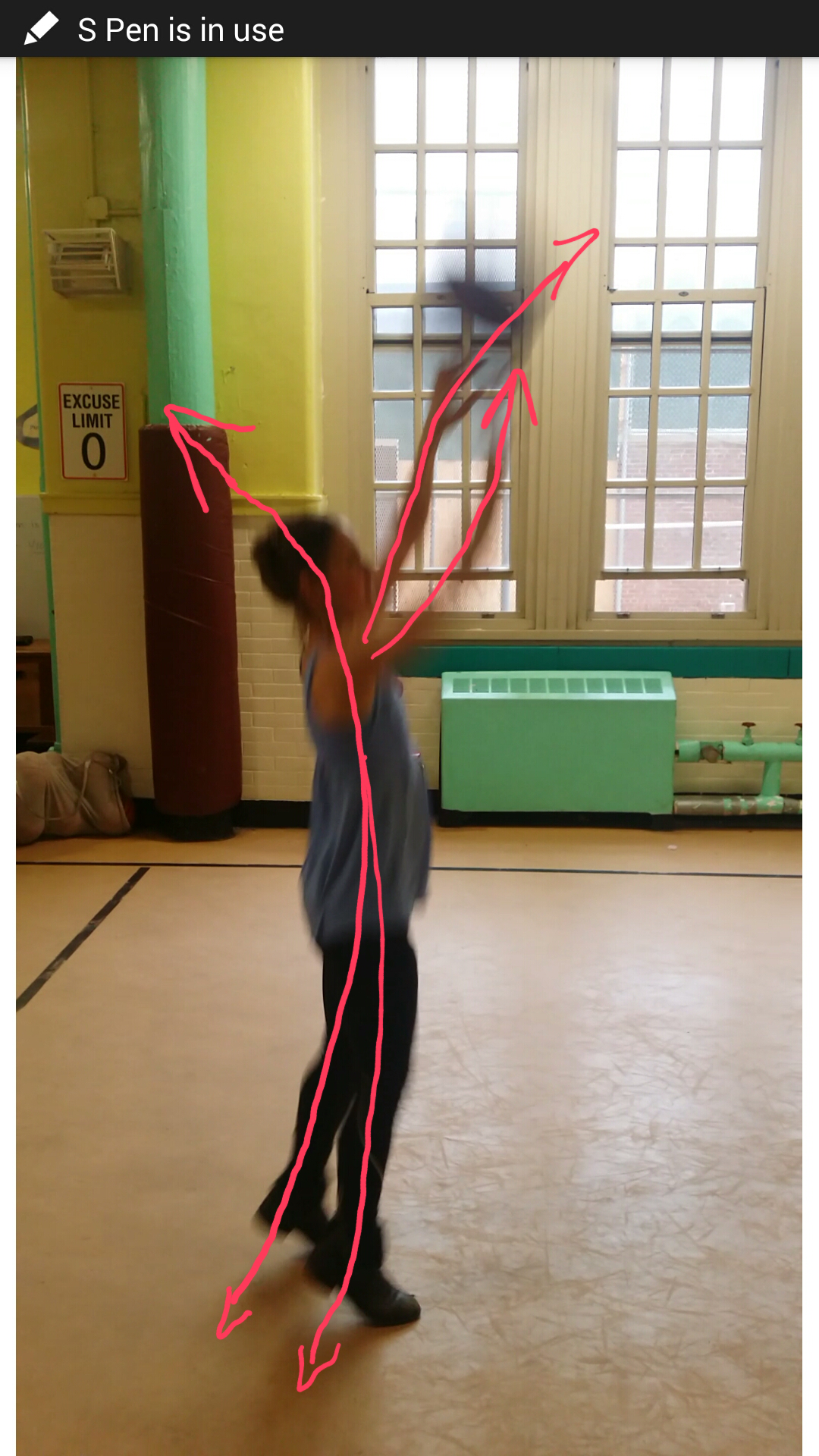
After working with Steady Buckets for two years, I’ve made many observations. Although the Alexander Principles are always the same, the bodies that come to me vary wildly. Some kids are slack; some kids are tense; some kids try too hard; some don’t try at all. I usually teach one on one, and give about ten kids, a 5-10 minute lesson each. Certain kids absorb the technique like a sponge and instantly see what it can do for them. They start making their shots and finding themselves “in the zone.” “I feel loose. I feel light. I couldn’t miss.” Kids who are in pain often see the value immediately. Some kids don’t see the value, and I let them go. It’s not for everyone. The principles are the same, but the challenge each kid faces is unique.
We do a lot of monkey because it is the base for shooting, dribbling, defending, everything actually. I incorporate a lot of Dart practices, like spirals and curves, and the innate springiness of the body. Depending upon the age of the kid, I use analogies like a river running up through the body, or that the floor bounces us up like a ball from our feet through the rest of the body. I show them that their arms can move independently of their torsos by folding at the gleno-humoral joint, and this starts to help them to see that when they shoot, their torsos can remain full and upright even as their arms move. For someone who doesn’t play any sports, I have an impressive theoretical knowledge of shooting form. My goal is to consistently hit foul shots, and be one of those rare experts who gained mastery from a completely different angle. But even with the Alexander Technique, it takes a tremendous amount of practice, and I haven’t devoted nearly enough time.
I came into this thinking that shooting would be the most obvious application of the Alexander Technique because it is a pure Alexander situation: it involves monkey and inhibition. But now I see that shooting is the most emotionally charged, habitually ingrained skill they learn, and very difficult to change. Proper shooting form involves sending the ball up in the air in a large arc by holding the body vertical, straightening the arms up over the head and slightly forward, and using the power of the jump to propel the ball. See Macky’s lines of force, Exhibit A: up through the whole body, forward through the hands and arms. For the younger kids, it is counterintuitive to do this. They want to fling the ball forward with their elbows counteracted by throwing their upper backs backward because they don’t believe that straightening the arms coupled with a jump up will be enough. See my version of this, Exhibit B. Older kids are deeply attached to whatever form of shooting has been working for them, even if it hasn’t been working well. When they change their technique, they will probably lower their shooting percentage before they raise it. And until the kids are really mature and philosophical about basketball, they don’t shoot a high enough arc because they’re aiming for the basket as opposed to aiming for the center of the hoop above the basket. Teaching someone to prioritize the means whereby in the act of shooting a basket is like asking a hungry person to look at their food for ten minutes before beginning to eat. It takes A LOT of inhibition. They need to truly let go of the goal of making the basket.
Officially, I am the movement coach; a dancer who came to teach the players better posture and better movement patterns. Then I thought perhaps I would call myself the biomechanics coach because it sounded substantial and technical. I’ve come to realize, however, that the main thing I have to offer them is inhibition. The other coaches can teach them form and biomechanics (although they don’t usually understand how to access the hip joints), but nobody else can teach inhibition. I am their Zen coach. I teach them to let the ball shoot itself, to let the game play itself. And as much as they need to learn how to inhibit in order to change their form, I need to inhibit my desire to see them improve. As with any other activity, change can happen both instantaneously and glacially. They fold into a smooth, balanced monkey, and suddenly they’re moving around their opponents a beat ahead of everyone else. When it comes to shooting, they slowly start to trust a different form. One of my favorite students who falls deeply into the category of “tense and trying too hard” improved dramatically when I said, “remember that you shoot better when you’re relaxed.” That phrase allowed him to inhibit.
The Steady Buckets’ motto is “Outwork ‘Em.” The pursuit of excellence requires limitless hours of practice and dedication, and there is no way around that, but to be truly excellent, you must be able to let go of the thing you desire while you work towards it. What a balancing act!
In a more general way, is has been wonderful to share the ability to change. The Alexander Technique shows us that change is possible, and there is a path towards that change. I imagine the kids I work with absorb the idea that they can choose their actions. If they can go from slumping to standing up tall and balanced in less then a minute, maybe some of them will decide to study for a test instead of not study, go to college instead of not going. Maybe some slumped over little kid who considers himself un-athletic will feel “the zone” and decide that he can be good at sports. The Alexander Technique gives us choice and a means whereby!
[author] [author_image timthumb='on']http://www.acatnyc.org/main/wp-content/uploads/2016/02/e.faulkner.png[/author_image] [author_info]EMILY FAULKNER graduated from the American Center for the Alexander Technique in New York City in 1999, and has been an AmSat certified teacher ever since. Faulkner is also a dancer, dance teacher and choreographer.She is on the faculty of Movement Research, a world renowned institution for experimental dance, and has presented her choreography nationally and internationally. Her most current project is a dance film using Steady Buckets players. Emily teaches privately in New York City, and can be found at emilyfaulkner.com. Email her at emily.a.faulkner@gmail.com. [/author_info] [/author]
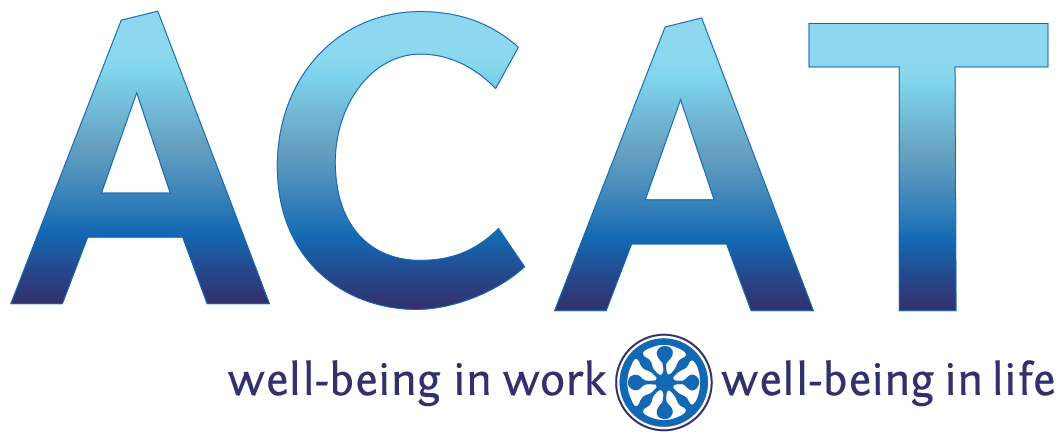
 by Karen Krueger
Many Alexander Technique teachers don't like to even mention the word "posture." They think the very word has so many wrong connotations that it should be avoided. But I take Humpty Dumpty's point of view: the important thing is not what people think a word might mean, but what we say it means:
by Karen Krueger
Many Alexander Technique teachers don't like to even mention the word "posture." They think the very word has so many wrong connotations that it should be avoided. But I take Humpty Dumpty's point of view: the important thing is not what people think a word might mean, but what we say it means:
 by Karen Krueger
I've been reading a lot lately about "vocal fry," a speaking mannerism that some people find extremely annoying and others defend as an innovative trend among influential young women. Vocal fry is a gravelly or creaky sound to the voice that is most clearly heard at the ends of words and phrases. Some people call it "the NPR voice." Others trace it to Kim Kardashian.
by Karen Krueger
I've been reading a lot lately about "vocal fry," a speaking mannerism that some people find extremely annoying and others defend as an innovative trend among influential young women. Vocal fry is a gravelly or creaky sound to the voice that is most clearly heard at the ends of words and phrases. Some people call it "the NPR voice." Others trace it to Kim Kardashian.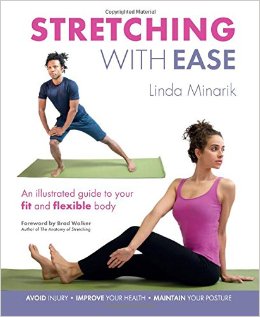 by Brooke Lieb
Linda Minarik is a pianist, dancer, singer, and fitness professional. Her new book is entitled Stretching with Ease. Linda has been familiar with the Alexander Technique for nearly 40 years. Her first private lessons were with ACAT alumna Linda Babits in connection with practicing piano with ease. Linda’s life-long love of movement inspired her to train in ballet, and to become a certified group fitness instructor, including teaching qualifications in Gyrokinesis® and the MELT Method®.
by Brooke Lieb
Linda Minarik is a pianist, dancer, singer, and fitness professional. Her new book is entitled Stretching with Ease. Linda has been familiar with the Alexander Technique for nearly 40 years. Her first private lessons were with ACAT alumna Linda Babits in connection with practicing piano with ease. Linda’s life-long love of movement inspired her to train in ballet, and to become a certified group fitness instructor, including teaching qualifications in Gyrokinesis® and the MELT Method®. By Jeffrey Glazer
By Jeffrey Glazer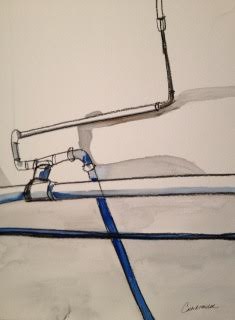 by Cate McNider
by Cate McNider
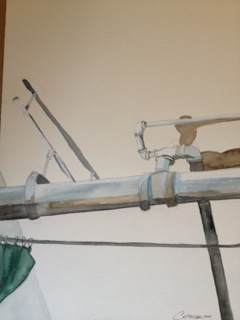
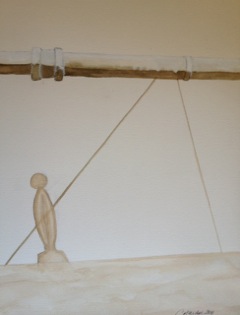
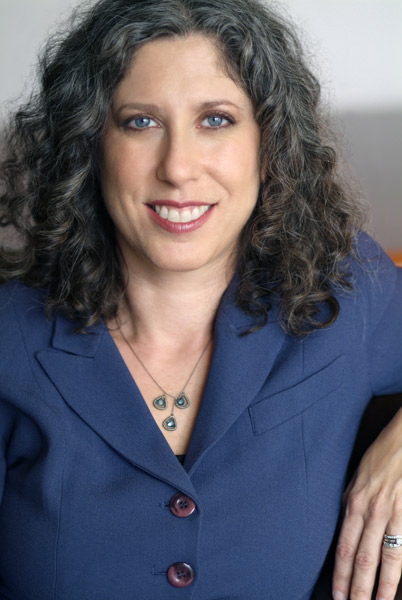 by Brooke Lieb
by Brooke Lieb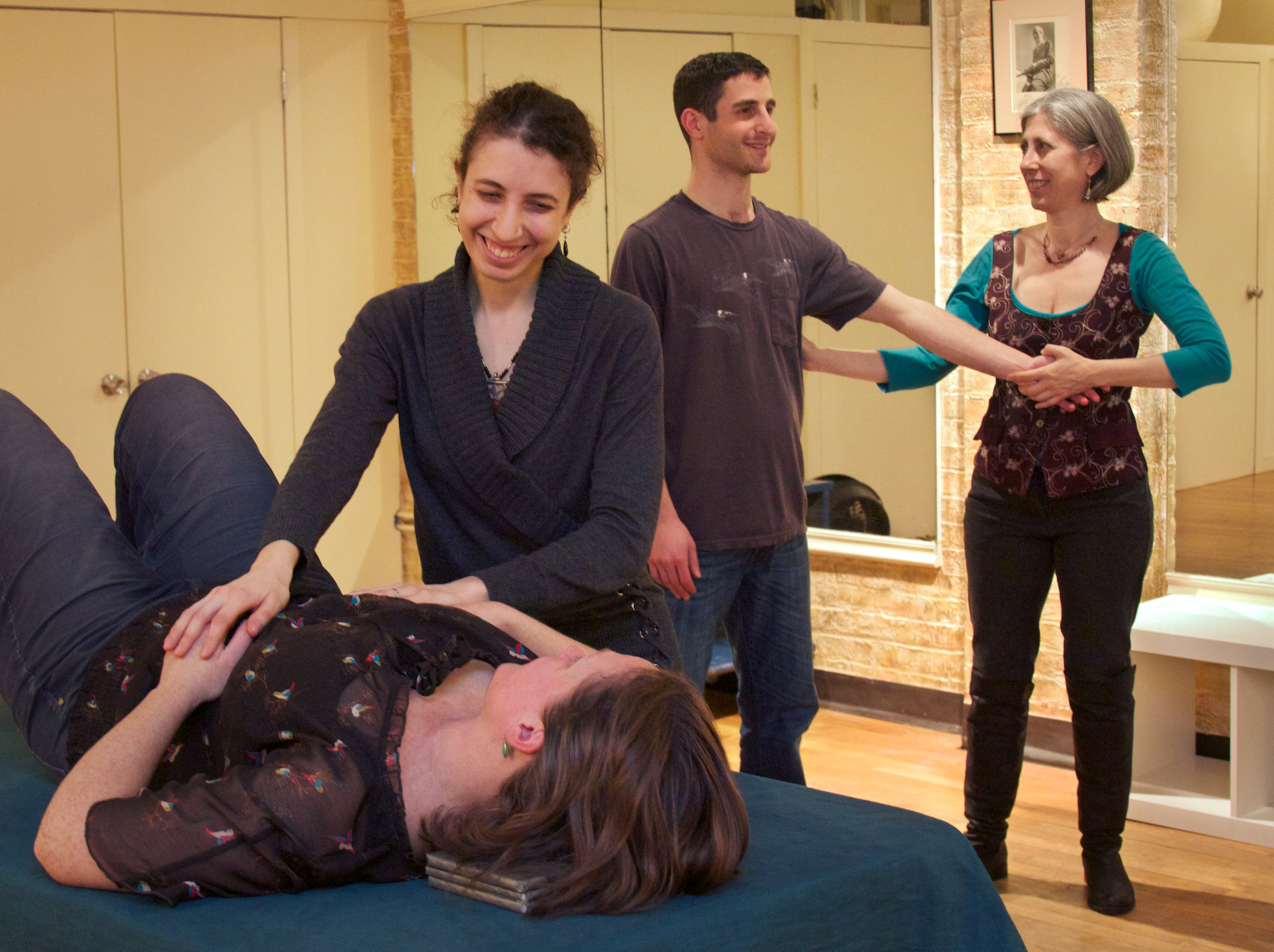 by Karen Krueger
In
by Karen Krueger
In  by Marta Curbelo
I always loved movement and dance. I became a “star” in my brand new elementary school when I danced in front of my father’s Latin band at a school assembly. As a stay-at-home mom, I missed dance. When Nicole was eight, I decided to get active again: I joined The Nickolaus Technique exercise classes. After a few years of taking classes, I became an instructor and gave classes. One of the franchise owners was training at ACAT and asked me to volunteer as his student. At the time, I was about to buy a Nickolaus franchise. After volunteering at ACAT and experiencing a lightness I had never before felt, I started The Alexander Technique lessons with Sarnie Ogus and my life changed. Forget about the Nickolaus franchise, this was for me. My then-husband was going to be assigned to London and I knew I could find a home in England with The Alexander Technique. We never made it to London, but I have been able to teach The Alexander Technique wherever I found myself: New York City, Stamford CT or Santa Fe NM; even being invited to give annual workshops in Italy and Switzerland over a six-year period.
by Marta Curbelo
I always loved movement and dance. I became a “star” in my brand new elementary school when I danced in front of my father’s Latin band at a school assembly. As a stay-at-home mom, I missed dance. When Nicole was eight, I decided to get active again: I joined The Nickolaus Technique exercise classes. After a few years of taking classes, I became an instructor and gave classes. One of the franchise owners was training at ACAT and asked me to volunteer as his student. At the time, I was about to buy a Nickolaus franchise. After volunteering at ACAT and experiencing a lightness I had never before felt, I started The Alexander Technique lessons with Sarnie Ogus and my life changed. Forget about the Nickolaus franchise, this was for me. My then-husband was going to be assigned to London and I knew I could find a home in England with The Alexander Technique. We never made it to London, but I have been able to teach The Alexander Technique wherever I found myself: New York City, Stamford CT or Santa Fe NM; even being invited to give annual workshops in Italy and Switzerland over a six-year period.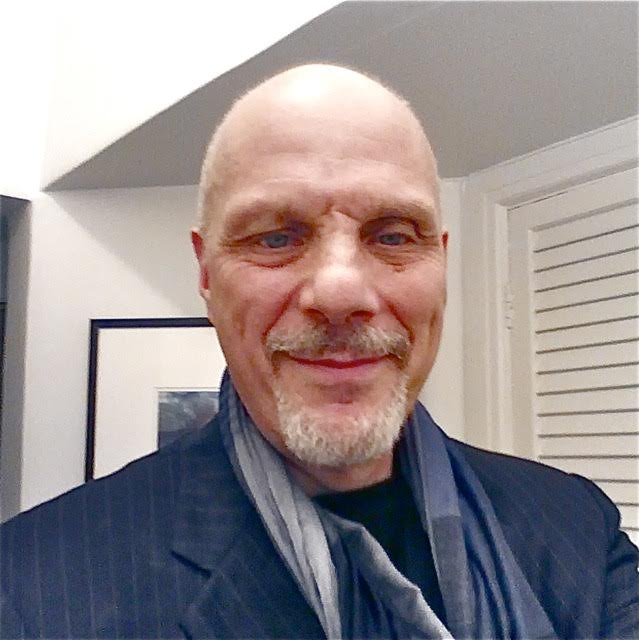 by Daniel Singer
As a young man in my 20’s and well out of college, I was continuing with the spiritual search I had consciously begun at age 15. So as it happened, I found myself living in upstate New York on a rural farm, with a serious group of spiritual seekers. We were studying, in a practical way, the ideas of Gurdjieff. This farm/craft guild was an extraordinarily impactful learning environment, centered around traditional arts like pottery, weaving, woodworking, printing, farming, home-crafts, etc. We were studying the ideas of Gurdjieff; and working at traditional crafts was part of a means we used for self-study. I myself became a glassblower artisan there, and made this community my home for 6 years.
by Daniel Singer
As a young man in my 20’s and well out of college, I was continuing with the spiritual search I had consciously begun at age 15. So as it happened, I found myself living in upstate New York on a rural farm, with a serious group of spiritual seekers. We were studying, in a practical way, the ideas of Gurdjieff. This farm/craft guild was an extraordinarily impactful learning environment, centered around traditional arts like pottery, weaving, woodworking, printing, farming, home-crafts, etc. We were studying the ideas of Gurdjieff; and working at traditional crafts was part of a means we used for self-study. I myself became a glassblower artisan there, and made this community my home for 6 years.
 by Kim Jessor
It was 1977. I had recently graduated from college, and had come to New York to be a dancer. I was living in Soho, taking dance classes, rehearsing and performing in lofts, and living the downtown New York arty life I had dreamed of. But then my knees began to give me trouble. Like F. M. Alexander, the medical world had no answers for me, nothing showed up on an x-ray, rest was advised. I was desperate; the life I had envisioned, the great joy dancing brought me and how much my young identity was tied up in it, seemed to be slipping away from me. At Sarah Lawrence College I had known Missy Vineyard. I knew she had become an Alexander teacher, and I had another dancer friend with knee trouble who was studying with Missy. They were the first people to tell me of this work that would change my life. I don’t remember clearly how I found my way to Jessica Wolf for my first lesson. She was still in her final semester of training. Once I went with her for a supervisory lesson to Judy Liebowitz’s (one of ACAT’s founders) apartment!
by Kim Jessor
It was 1977. I had recently graduated from college, and had come to New York to be a dancer. I was living in Soho, taking dance classes, rehearsing and performing in lofts, and living the downtown New York arty life I had dreamed of. But then my knees began to give me trouble. Like F. M. Alexander, the medical world had no answers for me, nothing showed up on an x-ray, rest was advised. I was desperate; the life I had envisioned, the great joy dancing brought me and how much my young identity was tied up in it, seemed to be slipping away from me. At Sarah Lawrence College I had known Missy Vineyard. I knew she had become an Alexander teacher, and I had another dancer friend with knee trouble who was studying with Missy. They were the first people to tell me of this work that would change my life. I don’t remember clearly how I found my way to Jessica Wolf for my first lesson. She was still in her final semester of training. Once I went with her for a supervisory lesson to Judy Liebowitz’s (one of ACAT’s founders) apartment!



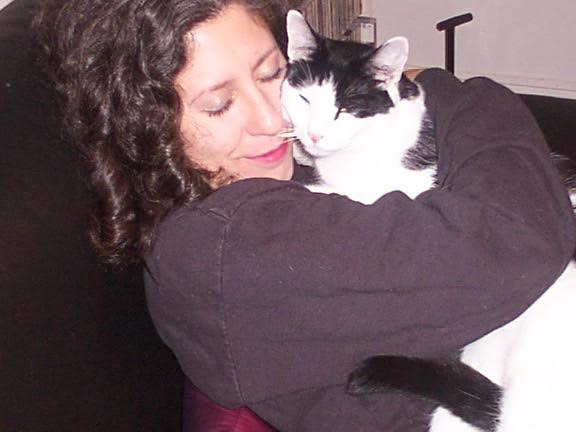 by Brooke Lieb
The Alexander Technique teaches a robust tool to recognize and address habits, including movement patterns, posture and muscle tone; and thinking and behavioral habits, as well.
by Brooke Lieb
The Alexander Technique teaches a robust tool to recognize and address habits, including movement patterns, posture and muscle tone; and thinking and behavioral habits, as well.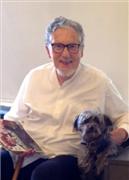 by Brooke Lieb
by Brooke Lieb